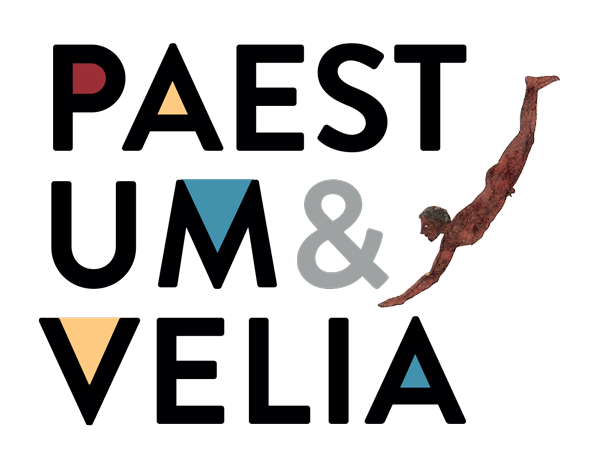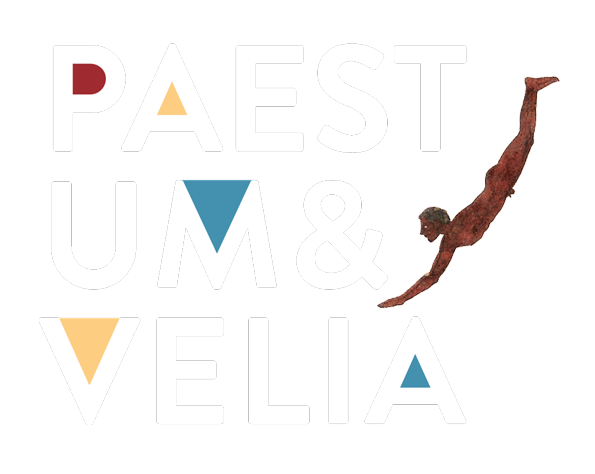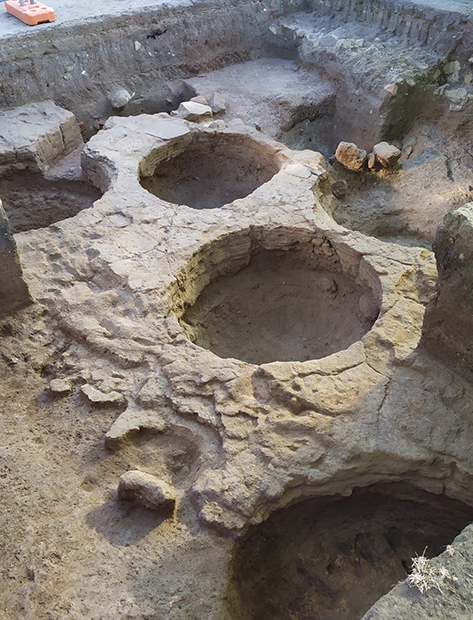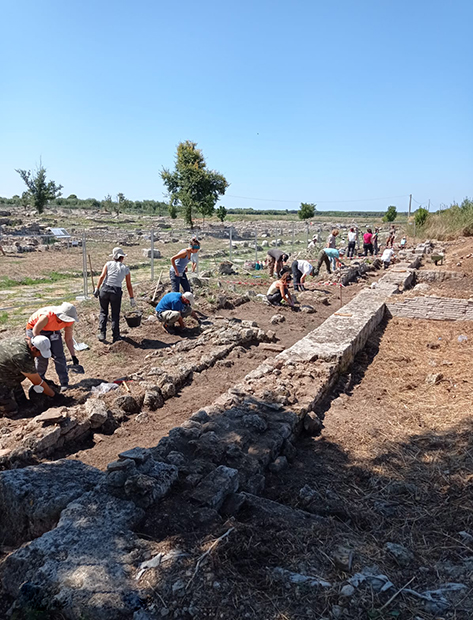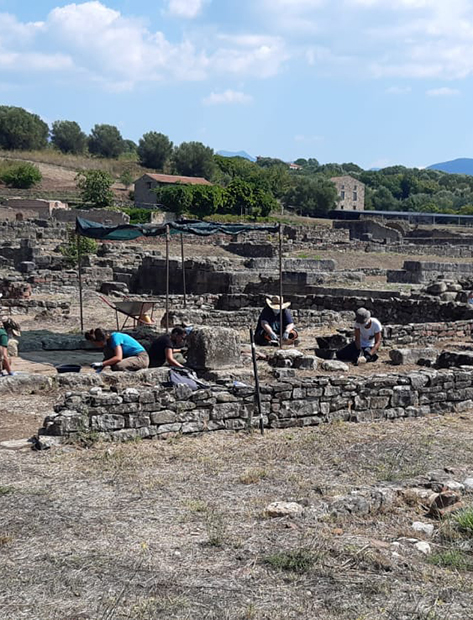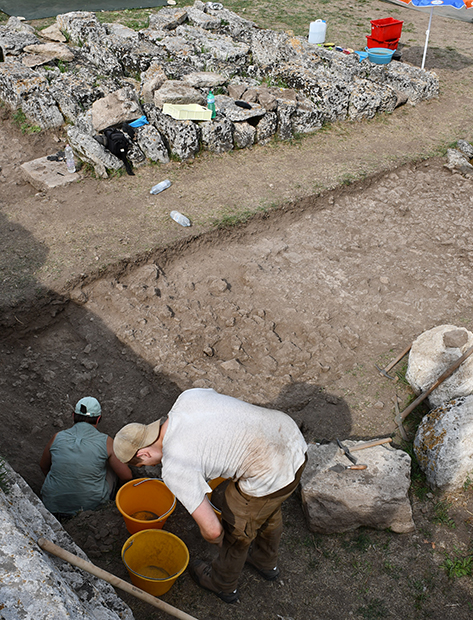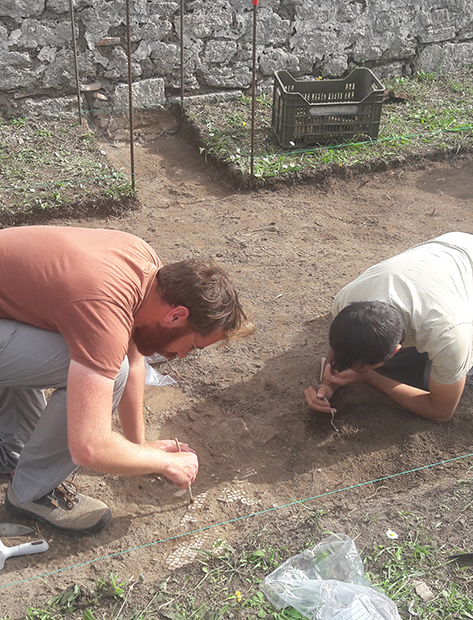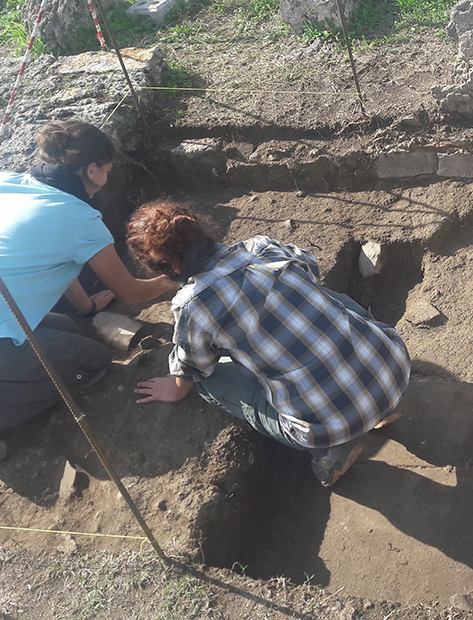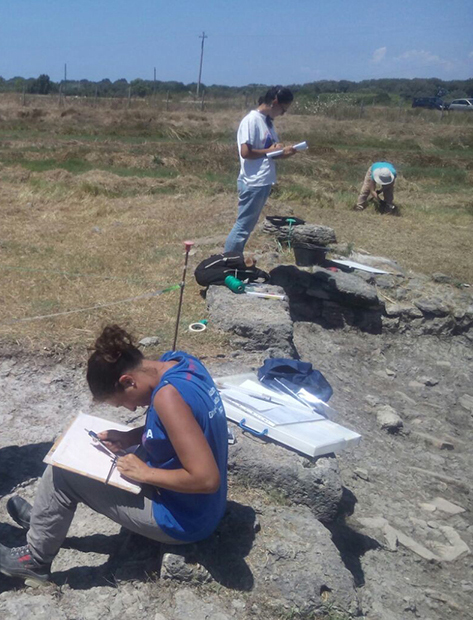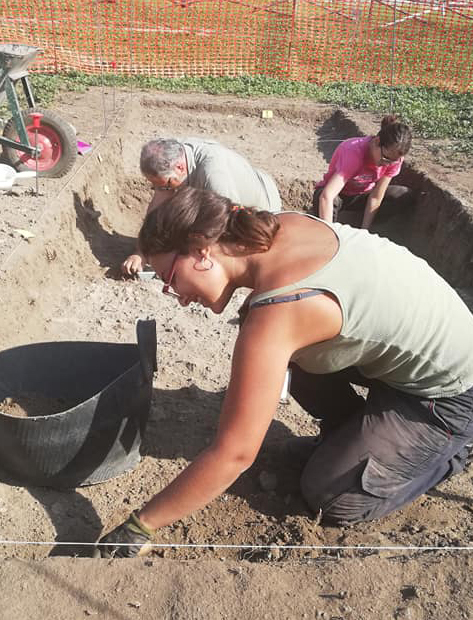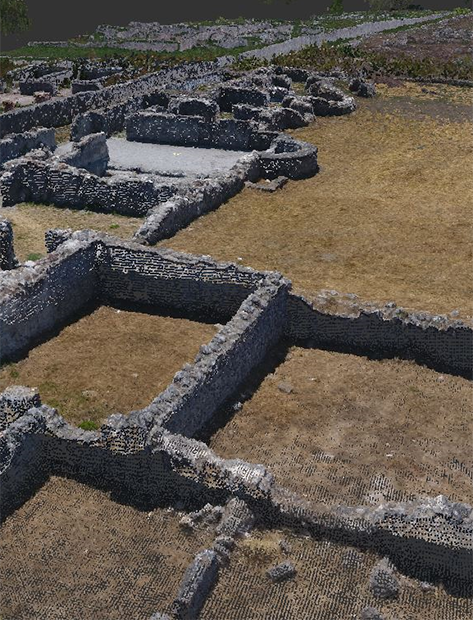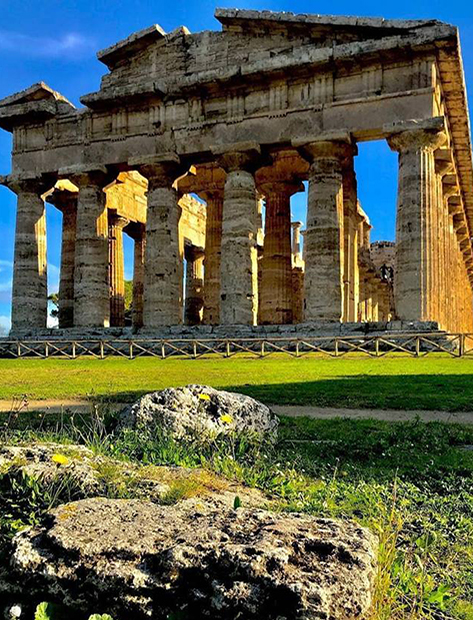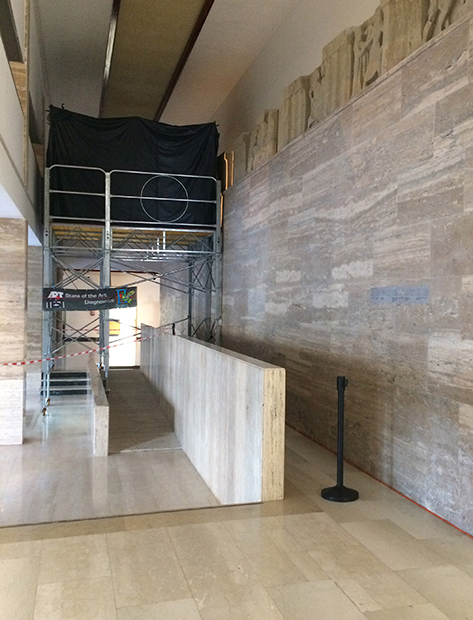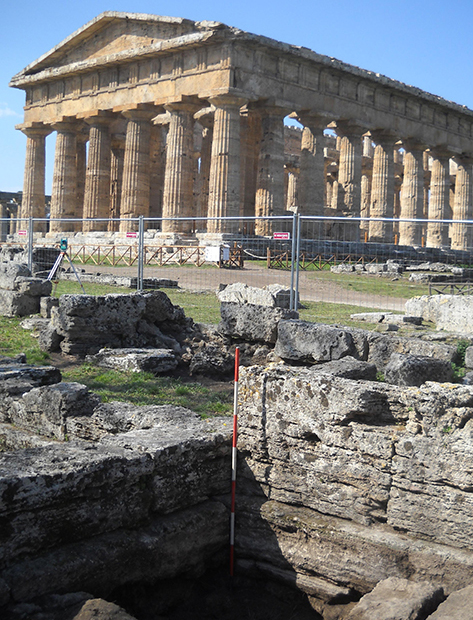Excavations in Paestum are ongoing and research becomes public
Although it is considered the “best preserved city of Magna Graecia”, Paestum is largely still unknown. While we have significant data on the public spaces around the Forum and the necropolises of the city – as well as on the three temples of the city – aspects such as daily life, the rural settlement, the city in late antiquity or the structure of the first colony are still waiting for an in-depth analysis. With a rich research programme, today we seek to fill these gaps in the history of the Paestum archaeological site with new stratigraphic excavations, archaeometric analyses and with the study of the archaeological materials held in the museum’s stores. In Paestum, research continues with a view to “public archaeology” thus promoting citizens’ involvement, not just by disclosing the results of these studies in a transparent and open manner, but also by trying to enthuse the public with daily visits to the sites and meetings with archaeologists.
EXCAVATIONS 2021
-
Scavo Velia
Descrizione: L’Acropoli di Elea/Velia è non solo il luogo più eminente della città antica, ma anche un contesto di particolare bellezza e attrazione, dove preesistenze architettoniche di epoche diverse mantengono un delicato equilibrio con la natura. Segnata dalle rovine della cittadella medievale di Castellamare della Bruca, l’area diventa oggetto di indagini archeologiche già nei primi anni del ‘900. A partire da questa data numerose campagne di scavi si sono succedete nell’area dell’Acropoli, generando conoscenza e domande ancore irrisolte. L’attuale progetto di ricerca del Parco Archeologico di Paestum e Velia si inserisce in questa tradizione di ricerche e problemi, avviando un nuovo ciclo di
-
Scavo area urbana: settore meridionale dell’insula 6-8
Sorry, this entry is only available in Italian.
-
Attività di ricerca dell’Università di Napoli Federico II
Sorry, this entry is only available in Italian.
-
IL TEMPIO «CORINZIO-DORICO» E IL COMIZIO AL FORO ROMANO DI PAESTUM
Sorry, this entry is only available in Italian.
EXCAVATIONS 2019
-
Scavo stratigrafico nell’area dell’agorà
Sorry, this entry is only available in Italian.
-
Scavo stratigrafico nell’area della Porticus
Sorry, this entry is only available in Italian.
-
Excavation of the greek house in block s 2/4
Description: The excavation, which started in 2016, investigates the remains of a house dating back to the late 6th/early 5th century BC. The foundations are in large stone blocks, an unusual construction technique for the time. The structure consists of three rectangular spaces, two enclosed rooms overlooking the third space, which is most likely a courtyard. Some materials from the excavation are displayed in the Paestum museum.
-
Tempio della Pace – scavo in concessione
Sorry, this entry is only available in Italian.
-
Excavations in the south-western area of the northern urban sanctuary (Athenaion)
Description: The research was initiated in the summer of 2018 with geo-physical (geo-radar and geo-electrical) surveys and is the final outcome of long archival research and study of the materials that have made it possible to have a complete picture of all activities (excavations, restorations, knocking down structures) carried out in the area starting from the 19th century without overlooking even older prints and drawings. In September 2018, in the south-western section of the sanctuary, in a site measuring approximately 400 m2, after a careful study of the results of the geo-physical surveys, two small assays were set up (SS. 242,
-
Sanctuary of Hera at the mouth of river Sele
Description: The research started in 1987 and clarified the manners and forms of the sanctuary’s layout, defining the function and chronology of the buildings already unearthed in Zone A. Since 2013, the investigation has aimed at highlighting the residential and structural features of the surrounding areas, zones C and B. A systematic survey of the area has been carried out since 2014. Furthermore, a series of geo-physical analyses are under way (geo-radar, magnetometry, etc.). The Naples University workgroup is looking after the analysis and publishing in the Notebooks of the Magna Graecia Study Centre of the various classes of materials from the
EXCAVATIONS 2018
-
Excavation at the southern Porticus
Description: The excavation, which began in September 2018, surveys the area taken by the southern Porticus. The plan of this monumental complex has been dated back to the mid-1st century BC but the ceramic material and some applications date back to an earlier period. The research conducted in September 2018 made it possible to analyse a taberna, whose internal layout has been identified, and the southern space of the portico, the stratigraphy sequences of which had already been recognised in previous excavations. The materials of the 2018 excavation and of the previous ones are stored in the stores of the Paestum Archaeological Museum.
-
THE PONTE DI FERRO NECROPOLIS
Description: The study aims at revising and systematically publishing the data concerning the Ponte di Ferro necropolis surveyed in the 1980s by G. Avagliano. The necropolis, located on a sandy dune 850 m north-west of the walls of Paestum, has relinquished one hundred and ninety one burials, often without accoutrements, which differ markedly from the funerary customs in the other Paestum necropolises between the 6th and 4th century BC. As a matter of fact, the tombs are likely to belong to members of the Poseidonia community of low or servile social standing, a circumstance that makes Ponte di Ferro one of the
-
EXCAVATION AT THE SHRINE/HEROON
Description: The new investigations at the monument, dating back to 510 BC, started in 2018 and concerned the exploration of a small sector located on the eastern side, next to the Roman age boundary wall that encloses the shrine. The discovery of the section of a curved canal, partly carved in the stone, made it possible to assume that this feature would pertain to the mound that is believed to have originally covered the small building. Other investigations have been scheduled, to be performed starting in June 2019, to complete the exploration of the eastern side and start studying certain architectural
-
Corpus of the architectural terracottas of the Paestum Museum
Description: The corpus of the Paestum architectural terracottas is only partly known. A wider repertoire kept in the stores should be added to what has been published and systematised so far. The work, which began as a workshop of the Sister Orsola-Vanvitelli Postgraduate School of Archaeology, continued by filing the materials and defining decorative systems or, when possible, specific roofs. The group is currently busy with the publication of the outcome.
-
NEW INVESTIGATIONS IN BLOCK 4-6 OF PAESTUM
Description: In May 2018, investigations resumed in block 4-6 of the archaeological site of Paestum. Under a cooperation agreement between the Paestum Archaeological Park, the Naples University “L’Orientale” and the Interdepartmental Centre for Archaeology Services (CISA), the analyses focused on the area of the private dwellings and of the bath complex that make up the block, located in the south-western part of the site. The captures by RPAS (Remotely Piloted Aircraft) with RGB, thermal and multi-spectrum sensors were supplemented with terrestrial photogrammetric surveys. The digital products and three-dimensional models processed were the starting point for the production of a detailed plan
-
Surveys with georadar
Description: starting from March, geophysical surveys have been initiated in the area of the southern sanctuary of Paestum, to the east of the Basilica and of the Temple of Neptune. The first results of the geo-radar and geo-electrical surveys show the presence of various underground rooms and tunnels, partly linked to the circulation and preservation of water, partly to do with ritual activities. The analyses will extend to the coming months and will make it possible to plan specific activities of exploration and excavation, in addition to mapping out the underground of this portion of the city of Paestum.
-
ARCHAEOMETRIC ANALYSES ON THE METOPES OF THE SELE
Description: Since March 2019, multi-spectrum analyses have been carried out on the most ancient metopes of the Heraion on the mouth of the Sele displayed at the Museum. This is a non-destructive method of analysis that is carried out via a scientific camera that takes shots of the metopes at various frequencies. In this way it is possible to isolate any elements on the metopes, such as different materials, treatments, restorations or tampering at various levels, no longer visible residues of paint. In order to shoot, the room must be completely darkened; hence a sort of mobile camera obscura had to
-
Archaeological excavation of the house of the priests
Description: This is a large rectangular structure that occupies an area of almost 400 m2, built in stone blocks. The building consists of seven quadrangular rooms, with the main opening towards the temple of Neptune. The internal rooms, some of which are paved with large travertine slabs or decorated with geometric patterns, overlook a single internal open space.
